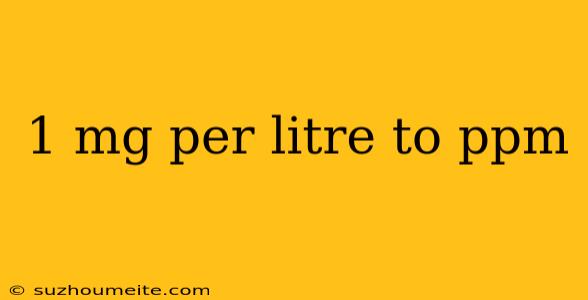1 mg/L to ppm: Understanding the Conversion
When working with concentrations of substances in water, it's essential to understand the different units of measurement used to express these concentrations. Two common units of measurement are milligrams per liter (mg/L) and parts per million (ppm). In this article, we'll explore the conversion between 1 mg/L and ppm.
What is mg/L?
Milligrams per liter (mg/L) is a unit of concentration that expresses the mass of a substance in milligrams per liter of solution. It's commonly used in chemistry and environmental science to measure the concentration of substances in water or other liquids.
What is ppm?
Parts per million (ppm) is a unit of concentration that expresses the ratio of the mass of a substance to the mass of the solution. It's often used to express the concentration of substances in water or other liquids. ppm is equivalent to milligrams per kilogram (mg/kg) or micrograms per milliliter (μg/mL).
Converting 1 mg/L to ppm
To convert 1 mg/L to ppm, we need to know that 1 liter of water weighs approximately 1 kilogram. Therefore, we can set up the following conversion factor:
1 mg/L = 1 mg/1000 g (since 1 L ≈ 1000 g)
Since ppm is equivalent to mg/kg, we can convert 1 mg/L to ppm as follows:
1 mg/L = 1 mg/1000 g × (1000 g/kg) = 1 ppm
Key Takeaways
- 1 mg/L is equivalent to 1 ppm
- mg/L and ppm are both units of concentration used to express the amount of a substance in a solution
- Understanding the conversion between mg/L and ppm is essential in chemistry, environmental science, and other fields where concentration measurements are critical
By grasping the conversion between 1 mg/L and ppm, you'll be better equipped to work with concentrations and make accurate calculations in your field of study or profession.
